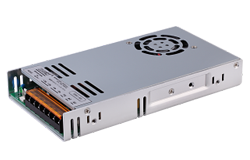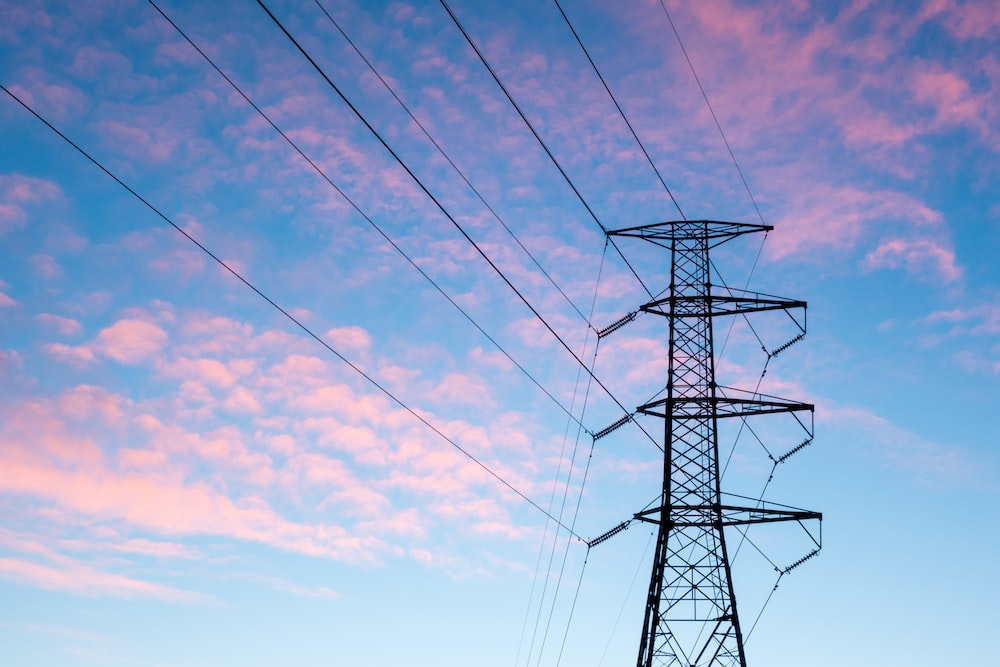nyheder
AC-DC Converter: Converting Alternating Current to Direct Current
Author: ZYG Power Module Time: 2023-4-18
An AC-DC converter is an electronic device that converts the alternating current (AC) supply voltage to direct current (DC) voltage. This type of converter is used in many applications such as power supplies, battery chargers, and lighting systems. In this article, we will discuss the working principle of an AC-DC converter and its different types.
Working Principle
The working principle of an AC-DC converter is based on rectification. Rectification is the process of converting an AC voltage into a DC voltage. This process involves the use of diodes to rectify the AC voltage. A diode is an electronic component that allows current to flow in one direction only.
The AC voltage is first stepped down to a lower voltage using a transformer. The transformer is an electrical device that transfers electrical energy from one circuit to another through electromagnetic induction. After being stepped down, the AC voltage is rectified using one or more diodes. The rectified voltage is then filtered using a capacitor to remove any AC ripple or noise. The resulting DC voltage is then regulated to a constant voltage level using a voltage regulator.
Types of AC-DC Converters
There are two main types of AC-DC converters: unregulated and regulated. Unregulated AC-DC converters deliver a fixed DC voltage output that varies with changes in the input voltage and load. Regulated AC-DC converters deliver a constant DC voltage output regardless of changes in the input voltage or load.
Unregulated AC-DC converters are further classified into two types: half-wave and full-wave rectifiers. Half-wave rectifiers use only one diode to rectify the AC voltage, resulting in a pulsating DC voltage output. Full-wave rectifiers, on the other hand, use two or more diodes to rectify the AC voltage, resulting in a smoother DC voltage output.

Regulated AC-DC converters are also further classified into two types: linear and switching. Linear regulators use a series transistor to regulate the output voltage. They are simple and reliable but are not very efficient. Switching regulators use a switching element such as a transistor or a MOSFET to switch the input voltage on and off rapidly. They are more complex but are more efficient than linear regulators.
Conclusion
AC-DC converters are essential components in many electronic devices. They allow electronic devices to operate on DC voltage even when the power source is AC voltage. There are different types of AC-DC converters that vary in terms of their working principle, output voltage, and efficiency. Understanding the different types of AC-DC converters can help in selecting the appropriate converter for a specific application.
Tidligere: AC-DC Converter: Converting Alternating Current to Direct Current
Næste: Generering af jævnstrøm fra AC-forsyning ved hjælp af en AC-DC-konverter
relevant information
-
2023-5-22
Powering Industrial Equipment with Efficient AC-DC Converters
The reliable and efficient operation of industrial equipment relies heavily on the quality of the power supply. To ensure optimal performance, industrial equipment often requires a stable and clean DC voltage that can be generated from the AC mains power supply using an AC-DC converter. Traditionally, industrial equipment has been powered by bulky and heavy linear power supplies that convert AC to DC using a transformer and rectifier circuit. However, advancements in semiconductor technology have led to the development of more efficient and compact AC-DC converters that utilize switch-mode power supply (SMPS) topologies. One of the most common SMPS topologies used in industrial equipment is the flyback converter. This topology is simple, cost-effective, and can provide high power density. It...
Se detaljer -
2023-5-29
HP Series AC DC Converter: Efficient Power Conversion for High-Performance Applications
When it comes to high-performance applications, there\'s no room for error. Every component must be perfectly designed and optimized for maximum efficiency and reliability. This is especially true for power converters, which are responsible for delivering the right amount of power to critical systems. That\'s where the HP Series AC DC converter comes in. This powerful and efficient converter is designed to meet the needs of even the most demanding applications. The HP Series AC DC converter is a high-performance power converter that delivers reliable and efficient power to critical systems. It is designed to operate in harsh environments, making it ideal for use in a wide range of applications, including aerospace, defense, and industrial applications. With its high efficiency...
Se detaljer -
2023-4-15
Generating Direct Current: The AC-DC Converter
Direct current (DC) is a type of electrical current that flows in only one direction. It is widely used in electronics, power supplies, and many other applications. However, most of our electrical power grid is alternating current (AC), which means that the electrical current periodically changes direction. Therefore, to use AC power in DC devices, we need an AC-DC converter to convert the AC power into DC power. In this article, we will discuss how an AC-DC converter works. Firstly, let understand the difference between AC and DC power. AC power alternates between positive and negative voltage cycles, and it flows in a sine wave pattern. On the other hand, DC power flows in a straight line, and it has...
Se detaljer -
2023-3-2
Vigtigheden af kvalitetskontrol i engrosproduktion af AC-DC strømforsyninger
When it comes to wholesale AC-DC power supply manufacturing, quality control is of utmost importance. AC-DC power supplies are widely used in various industries, including telecommunications, medical devices, and consumer electronics, to name a few. They convert alternating current (AC) to direct current (DC) and are responsible for providing the appropriate level of power to devices. Poor quality AC-DC power supplies can result in malfunctions, damage to equipment, and even pose a safety risk. Therefore, it is essential to have strict quality control measures in place throughout the manufacturing process. One crucial aspect of quality control in AC-DC power supply manufacturing is testing. Testing should be conducted at various stages of the manufacturing process to ensure that the final product...
Se detaljer -
2023-4-15
AC-DC Converter: Converting Alternating Current to Direct Current
AC-DC converters, also known as rectifiers, are electronic devices that convert alternating current (AC) to direct current (DC). They are widely used in a variety of applications, including power supplies, battery chargers, and motor drives. In this article, we will explore the basics of AC-DC converters, their types, and their uses. Alternating current (AC) is a type of electrical current that reverses its direction of flow at regular intervals. This is usually represented by a sine wave, where the current alternates between positive and negative values. In contrast, direct current (DC) flows in only one direction and remains constant. The main purpose of an AC-DC converter is to convert the AC voltage into a DC voltage. This is done by...
Se detaljer -
2023-6-5
AC DC Converter Module: A Compact Solution for Efficient Power Conversion
The AC-DC converter module is a compact and efficient solution for power conversion in various electronic devices. The module is designed to convert the alternating current (AC) from the main power supply into a direct current (DC) that can be used by electronic devices. This technology has become increasingly popular due to its high efficiency, reliability, and compact size. The AC-DC converter module is an essential component in electronic devices such as computers, telecommunications equipment, and medical devices, among others. The module works by rectifying the AC power into a DC voltage using a diode bridge and a capacitor filter. The rectified voltage is then regulated to the desired output voltage using a voltage regulator. The output voltage can be...
Se detaljer


















